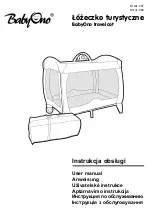8 of 13
Easy Rate Sensor
PN 074-677-P1A
3
Grasp the edge of the new crystal with a clean pair of Teflon
™
tweezers. Orient the
crystal so the patterned electrode is facing up. Gently insert the edge of the crystal
into the crystal holder pushing aside the spring contacts until the crystal is seated
evenly and securely in the crystal holder.
NOTE:
If using a vacuum pencil, the suction surface touching the crystal must be
kept clean. When not in use, store the vacuum pencil so that its tip does not
touch other surfaces. Regularly clean or replace the suction tip.
4
Reinstall the holder in the sensor body; push the holder straight in making certain that
it is completely seated in the sensor body.
Maintenance
Establishing a regular maintenance cycle based on the needs of the process is essential
to the long term successful operation of the sensor. Sensor maintenance also impacts
reproducibility of results. The following are the components that should be inspected
during maintenance.
Crystal Holder
The crystal holder makes electrical and thermal connection to the crystal at the crystal
perimeter. Coating material will eventually start to build up on the crystal holder contact
surface and will reduce the electrical and thermal conductance. This leads to reduced
crystal life and increased rate noise. Material buildup on the holder must be removed
regularly to maintain a constant size of the aperture run-to-run.
Crystal Leaf Spring
All Easy Rate Sensors have contact leafs that make the electrical connection from the
sensor to the rear electrode on the crystal. These contact leaves must be inspected
regularly. While rarely necessary, the spring contacts may need adjustment. Bend them
to a 45º angle as shown in


















